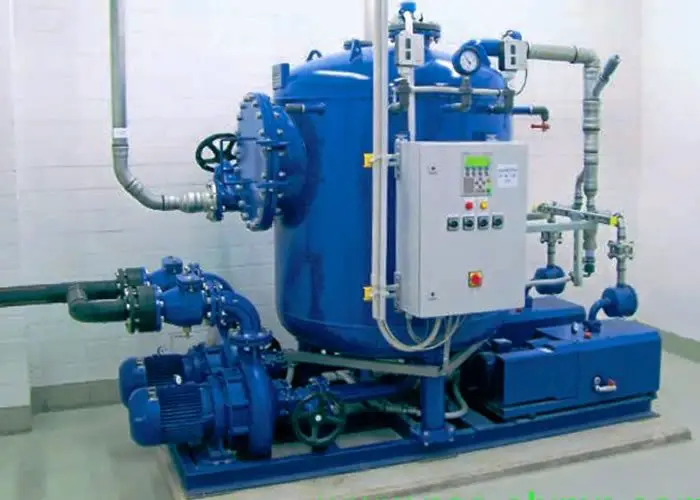ILISO Consulting, known for its award-winning infrastructure solutions for developing communities, has partnered with Forefront Engineering Solutions, to develop the first Roediger Vacuum Sewer Technology project in South Africa.
This pilot project is being carried out in Van Stadensrus for the Naledi Local Municipality in the Free State.
“The vacuum system presents an alternate to water-borne sewer systems, with multiple benefits for municipalities and their direct communities,” says Clint Koopman, CEO of ILISO Consulting, a subsidiary of NAKO Group. “ILISO is the first engineering firm to offer the design of vacuum systems in South Africa.”
Unlike conventional sanitary sewer systems, which use water to carry waste to pump stations, the vacuum system uses negative air pressure in a network of pipes to transport waste products to a vacuum station.
A South African first
The vacuum system was first introduced in Europe in the late 1800s; it has been successful in places as diverse as Botswana and Dubai. More commonly, the system is widely used on ships, trains and airplanes.
As a forward-thinking engineering brand, ILISO Consulting recognised the benefits of the Roediger Vacuum System as part of its developmental mission to deliver better sanitation solutions to underdeveloped and growing communities. It offers technical support to Forefront Engineering Solutions, the sole provider of this technology in South Africa, as well as maintenance and training programmes to the clients and contactors.
A year ago, ILISO approached the Free State Department of Human Settlement with a presentation of the system. “Even without any example of prior projects of this kind in South Africa, the Department recognised the merits of this system agreed to the launch of pilot project,” says Koopman.
Innovation in the air
The system consists of four components. The first is a gravity system that takes waste from the house to the earth boundary of each stand, where a collection chamber interfaces with a valve unit to enter a vacuum pipeline. Negative air pressure inside this network draws the waste towards a central vacuum station, from where it is discharged either into an existing outfall sewer or directly into the WWTP.
As the air-pressure system does not rely on gravity, the vacuum station need not always be placed at the lowest point, provided the lowest connection point is not more than 3-4m below the level of the vacuum station. “Because it is a sealed air system, no manholes are required,” Koopman explains. “Manholes are notoriously problematic in terms of dumping of foreign material, sedimentation and other blockages. With this system, there is a massive reduction in maintenance requirements.”
Although capital investments may in some instances be slightly higher than a traditional system, the lifecycle costs are significantly lower. “Depending on site conditions and other factors, the overall costs can be much lower,” he adds.
Unlike conventional systems, which requires pipes to be laid deep and at steep slopes, the vacuum sewer trench can be placed closer to the surface (not deeper than 1,25m) and at a minimum slope of 0.2%.
Furthermore, a single vacuum station can comfortably service an area with a radius of 4 kilometres. “The strength of the vacuum system is that vacuum station can take the place of multiple pump stations in traditional water-borne networks, which reduces operational cost,” he says. “The shallower trench also makes it possible to increase participation of manual labour on projects.”
Reduced odour and risk
Due to the high-velocity air (3.5m/s) in the network, the fresh sludge arrives quicker at the WWTW whilst there is no build up of odour usually associated with conventional systems. “Because pressure inside the pipe is lower than the atmospheric pressure, there is no chance of leakage,” Koopman points out. “This removes the danger of waste polluting the ground water or river systems, especially in dry areas and or where water is scarce.”
Community response and involvement
Since the system went live in Van Stadensrus in mid-2013, the response from the community has been overwhelmingly positive. “There’s been a lot of praise for the changes we’ve made in improving sanitation and basic living conditions,” he says. “When people realised the benefits of the system, they had nothing but praise for the project.”
This is in part to ILISO Consulting’s ongoing community training and capacity building, to ensure that stakeholders understood how the system would work in their environment.
Furthermore, labour was contracted from the community to lay the pipelines as the trenches were shallow. “There was a lot of focus on preparing small contactors in the installation process,” Koopman says. “We used a small BEE firm in the Van Stadensrus project and, despite the technical challenges, it was implemented successfully.”
Building on success
The vacuum sewer system’s success in the Free State, has led to a contract with Magareng local municipality (Northern Cape) to install the Technology at 558 stands in the Municipal Region. Other Municipalities have shown a keen interest in the technology which may lead to further contracts.
“As engineers we believe in the technology and when it is feasible, will put it forward as a solution,” Koopman says. “It is a solid and proven operational system that delivers reliable sanitation and can give communities dignity and pride in their home environments,” he concluded.
